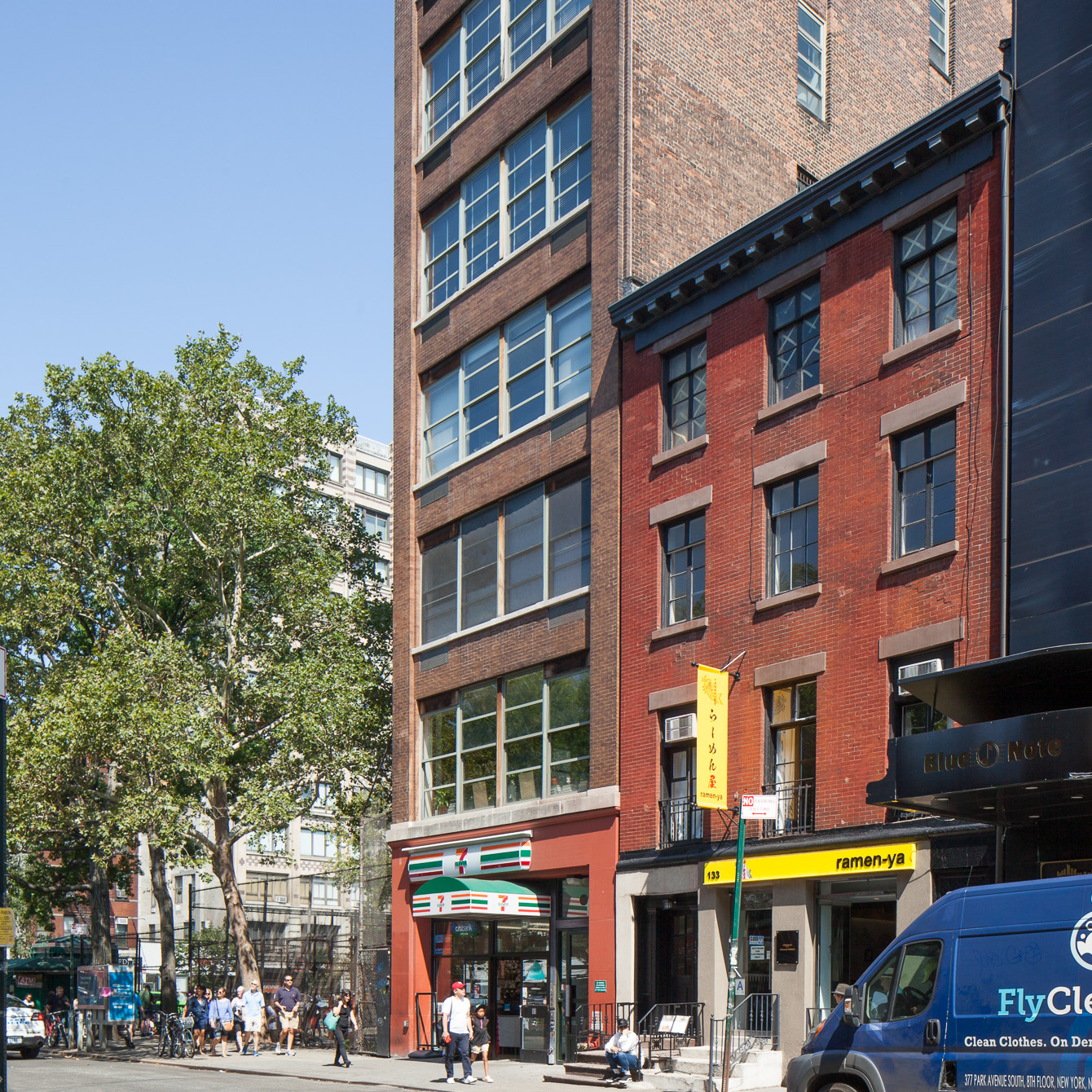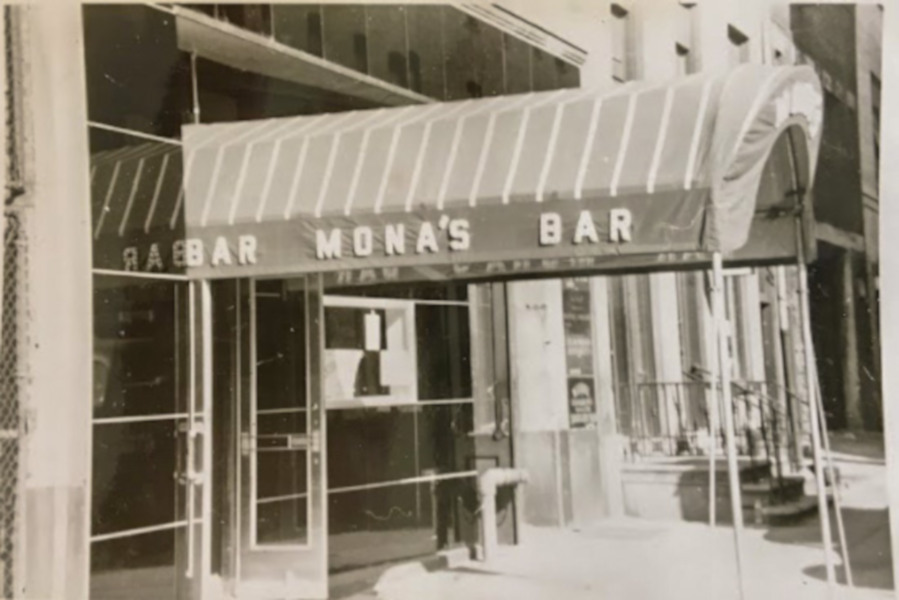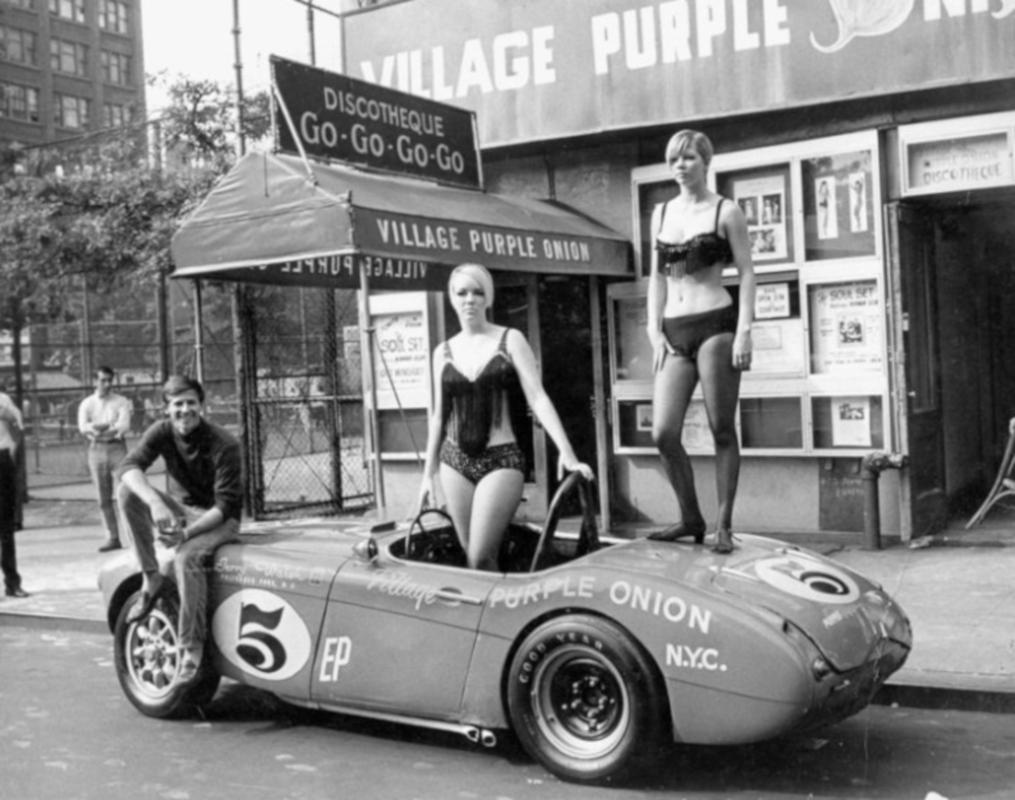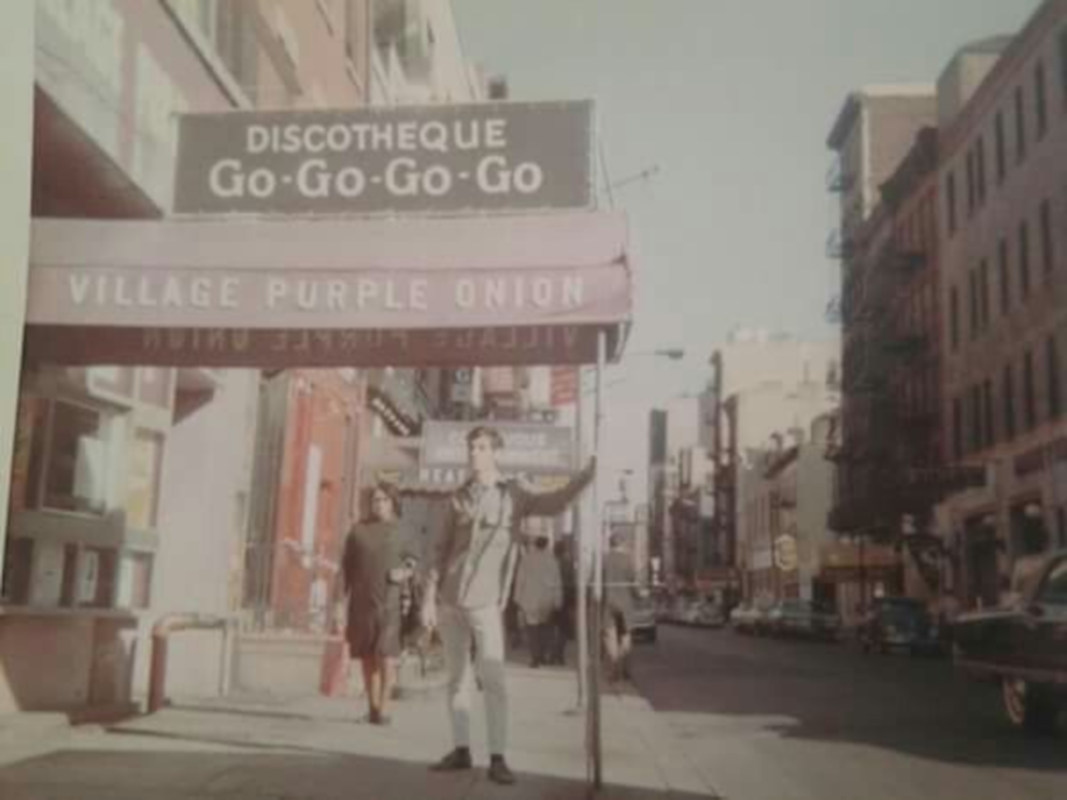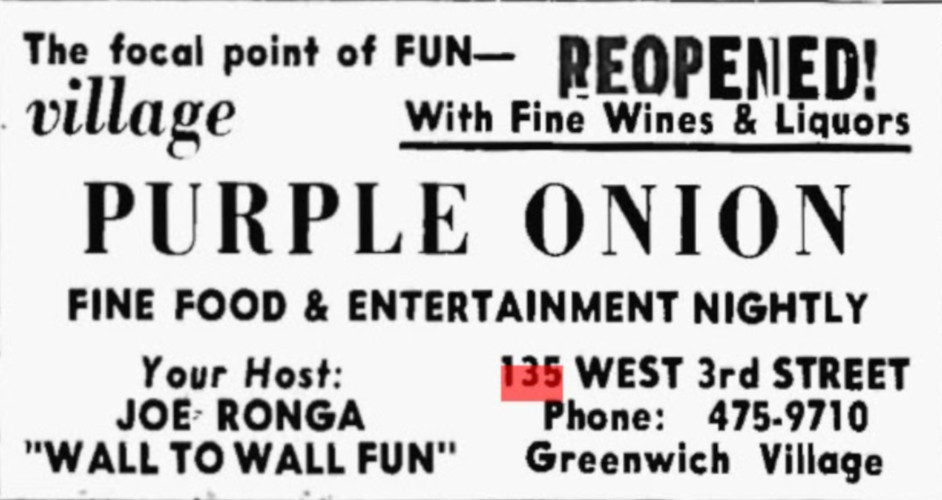overview
Mona’s, open from about 1949 to the early 1950s, was a fairly early example of a bar in Greenwich Village that attracted a lesbian clientele.
The Village Purple Onion opened in 1963 and became a popular go-go bar, discotheque, and gay hangout three years later.
History
Located near Washington Square Park, the ground floor of this mixed-use building became home to two bars with significant LGBT clientele: Mona’s (c. 1949 to early 1950s) and the Village Purple Onion (1963-1975). It appears that both bars were either named after or connected to Mona’s 440 Bar (1936-mid-1950s) and the Purple Onion (1952-1999) in San Francisco. In New York City and San Francisco, the Purple Onion moved into the former space of Mona’s, although any connection among the bars remains unclear.
Mona’s
Mona’s opened around 1949 across the street from Tony Pastor’s, furthering a trend of Mafia-run lesbian and gay bars on West 3rd Street in the 1950s. Little is known about Mona’s, and it is contested whether the establishment was a lesbian or a mixed-gathering bar. However, Swasarnt Nerf’s Gay Guides for 1949 states that Mona’s was a place where “dikes [were] likely to be found” and the blog Lost Womyn’s Space argues that Mona’s was “one of New York’s most obscure lesbian drinking establishments.”
This bar allegedly earned its name from and attempted to imitate Mona’s 440 in San Francisco, which was founded by and named after co-owner Ramona Sargeant. It is unknown if Sargeant had any connection to the New York City bar. San Francisco’s Mona’s 440 was a popular gathering space for male impersonators (women dressed like men) from across the country and, according to Swasarnt Nerf’s Gay Guide, was “the onetime national GHQ [General Headquarters] for North American Dikes.” New York City’s Mona’s never matched its namesake in local popularity or nationwide attention, ultimately closing by the mid-1950s.
Village Purple Onion
The Village Purple Onion opened in 1963 as an Italian restaurant with the intent of becoming a bar and nightclub. The State Liquor Authority denied the restaurant’s request for a liquor license in 1964, citing the predominance of homosexual hangouts and “lewd or obscene” behavior in Greenwich Village as the reasons. The Village Purple Onion reopened in June 1966 with “fine wine and liquors.”
The establishment continued to serve food but became most known as a go-go bar and discotheque with nightly entertainment. The Village Purple Onion employed topless female dancers and served as a performance venue for up-and-coming musicians such as Bob Dylan and Jimi Hendrix. The clientele was mixed, but author David Rosen called the Village Purple Onion a “mob-run gay hangout.” The Village Purple Onion closed in 1975 after the owner, Joe Ronga, retired.
The name “Purple Onion” in New York City and San Francisco may have been a sexual innuendo for aroused female genitalia. Unlike the Purple Onion in San Francisco, the Village Purple Onion did not serve as a comedy club in addition to a music venue.
Entry by Emily Kahn, project consultant (September 2021).
NOTE: Names above in bold indicate LGBT people.
Building Information
- Architect or Builder: Henry H. Koch
- Year Built: c. 1907
Sources
“3rd Street,” New York Songlines, bit.ly/3rbaVJz.
Ad, The Villager, June 16, 1966, 13.
“After Dark,” The New Yorker, December 9, 1968, 13.
Darwin Bell, “Proactive in NYC: Nostalgia for the Purple Onion and Overwhelmed by Disney,” The BLG Blog, bit.ly/3B84I5D.
Dick Boyd, “Before the Castro: North Beach, a Gay Mecca,” The Semaphore 189 (Winter 2010), bit.ly/3z1e0OT.
Hugh Hagius, Swasarnt Nerf’s Gay Guides for 1949 (United States: Bibliogay Publications, 2010).
Andrew Jacobs, “Mystery Ends But Its Traces Still Remains,” The New York Times, November 12, 1995.
Bruce King, “From the Editor: How to Lose Customers,” Gay Scene 5, no. 4 (1974), 2.
“Mona’s,” Lost Womyn’s Space, November 30, 2011, bit.ly/3hHCO8L.
Records & Briefs New York State Appellate Division, 25 AD 2nd, vol. 104, Library of the New York Law Institute.
“Restaurants, Bars & Grills–3440,” The New York Times, August 3, 1975.
David Rosen, Sin, Sex & Subversion: How What Was Taboo in 1950s New York Became America’s New Normal (New York: Carrel Books, 2016).
Joan Schenkar, The Talented Miss Highsmith: The Secret Life and Serious Art of Patricia Highsmith (New York: Picador, 2011).
“Village Purple Onion,” Early Hendrix, bit.ly/36CabDN.
Do you have more information about this site?
This project is enriched by your participation! Do you have your own images of this site? Or a story to share? Would you like to suggest a different historic site?
